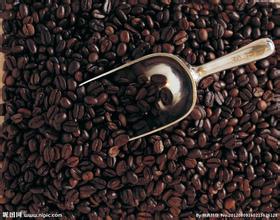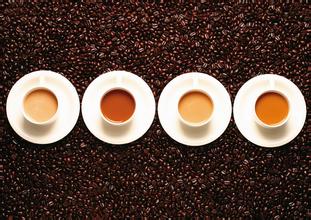An introduction to the extraction of three original species of hand-brewed coffee
An introduction to the extraction of three original species of hand-brewed coffee
The coffea robusta Linden is originally a mutant of the coffea canephora, but it is customary to compare the robusta with the Arabica rather than the Congolese. Robusta bean type is relatively round, sour is not obvious, but has a unique bitter taste, the flavor is similar to fried wheat, is known as "Luobu flavor". The flavor is very strong, mainly used in instant coffee, bottled coffee, liquid coffee and other industrial production of coffee. But the caffeine content of Robusta is about 3.2%, which is much higher than 1.5% of Arabica. The height of the tree is about 5m, the cultivation height is less than 500m, it has strong rot resistance, high temperature and rain tolerance, and has stronger resistance to leaf rust than Arabica. The main producers of Robusta species are Indonesia, Vietnam and West African countries with C ô te d'Ivoire, Algeria and Angola as the center. In recent years, Vietnam is more committed to becoming one of the major coffee producers and including coffee production in its national policy. Hey, this is one of the answers to Mr. Eric's question about why Vietnamese coffee can be sold for 0.5 yuan a cup. First, quality; second, culture; third, quantity. But Vietnam also produces some Arabica coffee.
Coffea liberica does not want to go into great detail here, because his trading scope is very small, usually not used, what we are talking about is not very often, so let's briefly describe it here. The origin of Liberian coffee is in West Africa, and it has strong adaptability to all kinds of environments, such as high and low temperature, damp or dry, except that it is not resistant to leaf rust, and Arabica species are not resistant to leaf rust. However, the flavor of Liberian species is worse than that of Arabica species, and the bitterness is extremely severe, so it is only traded on the domestic market in some West African countries, or planted for research. Bean-shaped spoon-shaped, large, tree height of 10m, cultivated at a height of less than 200m, strong rot resistance
The leaf rust-resistant varieties found in Congo in Africa have stronger disease resistance than Arabica. The hot and humid zone that is not suitable for Arabica coffee is where Robusta grows coffee. Robusta has a unique aroma and bitterness, accounting for only 2% or 3% of the mixed coffee, and the whole cup of coffee is robusta flavor. Its flavor is so bright and strong that if you want to taste it directly, you have to consider it. It is generally used in instant coffee, bottled coffee, liquid coffee and other industrial production of coffee. The content of caffeine is about 3.2%, much higher than 1.5% of Arabica species.
The main producing countries are Indonesia, Vietnam and West African countries with C ô te d'Ivoire, Algeria and Angola as the center. In recent years, Vietnam is more committed to becoming one of the major coffee producers.

Important Notice :
前街咖啡 FrontStreet Coffee has moved to new addredd:
FrontStreet Coffee Address: 315,Donghua East Road,GuangZhou
Tel:020 38364473
- Prev

The lowest continent in the world where coffee is grown.
The lowest continent in the world where coffee is grown, simply speaking, the higher the altitude, the better the taste of coffee beans. Coffee beans grown at high elevations have pleasant acidity, rich aroma and rich taste, which everyone likes; on the contrary, coffee grown at low elevations has almost no sour taste, single taste and plain taste. That's why baristas always emphasize the sea.
- Next

Introduction to the varieties of grinding scale of Arabica Mantenin coffee bean flavor description treatment method
Arabica Mantenin coffee bean flavor description method grinding scale variety introduction bourbon is almost all round beans, beans are a little smaller than tin card, ripening later, but the yield is 30% more than tin card. It is suitable for growing above 1200 meters above sea level, and its flavor is obviously more prominent than those below 1000 meters, but bourbon has a disadvantage that it will rest for a year as a result. The round body bourbon is full of vitality.
Related
- Beginners will see the "Coffee pull flower" guide!
- What is the difference between ice blog purified milk and ordinary milk coffee?
- Why is the Philippines the largest producer of crops in Liberia?
- For coffee extraction, should the fine powder be retained?
- How does extracted espresso fill pressed powder? How much strength does it take to press the powder?
- How to make jasmine cold extract coffee? Is the jasmine + latte good?
- Will this little toy really make the coffee taste better? How does Lily Drip affect coffee extraction?
- Will the action of slapping the filter cup also affect coffee extraction?
- What's the difference between powder-to-water ratio and powder-to-liquid ratio?
- What is the Ethiopian local species? What does it have to do with Heirloom native species?

